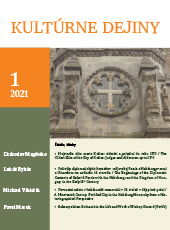Subcarpathian Ruthenia in the Life and Work of Bishop Gorazd (Pavlík)
Subcarpathian Ruthenia in the Life and Work of Bishop Gorazd (Pavlík)
Author(s): Pavel MarekSubject(s): History, Theology and Religion, Eastern Orthodoxy
Published by: VERBUM - vydavateľstvo Katolíckej univerzity v Ružomberku
Keywords: Subcarpathian Ruthenia; Orthodox Church; Bishop Gorazd (Pavlík); Czechoslovak Republic 1928 – 1938; religious and church crisis
Summary/Abstract: In the eastern territory of the Czechoslovak Republic, after its establish¬ment and after the end of the Great War, the Orthodox Church, suppressed by the adoption of what was called the Union of Uzhhorod (1646), started to revive. The evolving Orthodox movement, characterized by a wave of conversion of the population from the Greek Catholic Church to Orthodoxy, and often connected with the forcible seizure of the churches, parishes, and property of the Uniates, was faced by both the authori¬ties in Prague and locally with the aim of calming the situation and organizing the Orthodox Church. Bishop Gorazd (Pavlík) was also involved in this effort in the mid-1920s as the supreme representative of the Czech Orthodox eparchy. His involvement in Subcarpathian Ruthenia went through a development symbolized by terms as an observer, organizer, and beholder. This paper evokes his interventions in the development of those times and evaluates their quality. Bishop Gorazd came into contact with the Orthodox movement in Subcarpathian Ruthenia in the early 1920s. The focus of his local involvement dates back to 1926 – 1931, when the Ministry of Education entrusted him with the role of an unofficial government representative for this territory in the affairs of the Orthodox Church. At the same time, he served as a supervisor of Serbian bishops, who served as delegates to the Serbian Orthodox Church. The bishop made a significant contribution to the establishment of the Orthodox Eparchy of Mukachevo and to ensuring its economic operation. The accession of Bishop Damaskin (Grdanički) to the position of the first official patriarch of the Orthodox Church in Subcarpathian Ruthenia ended Gorazd’s official engagement, and he continued to have only friendly contacts with the local Orthodox community.
Journal: Kultúrne dejiny
- Issue Year: 12/2021
- Issue No: 1
- Page Range: 84-108
- Page Count: 25
- Language: English

